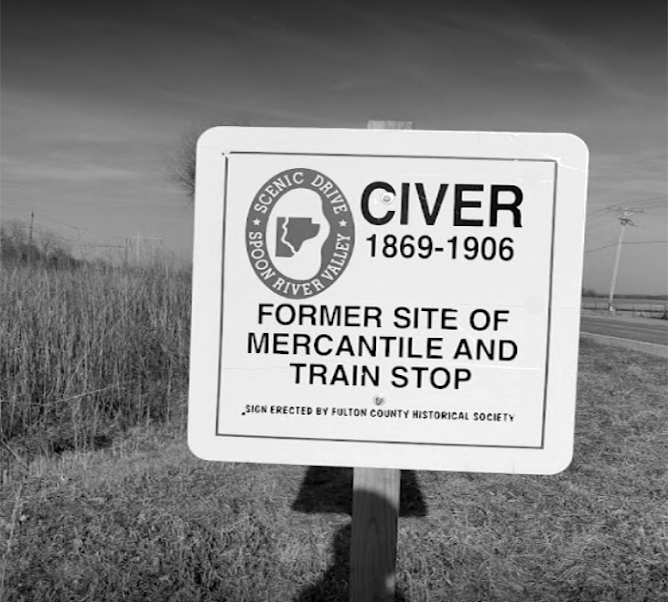Civer was located in Fulton County, Illinois, beginning as a settlement village six miles west of Canton. The earliest record of Civer (40° 31' 27" N 90° 6' 27" W) was a note from 1835 about Charles H. Turner who was engaged in farming until 1869. Mr. Floyd F. Putman was a native son of Illinois, born in Civer, Fulton County, on October 8, 1880.
David W. Pittman engaged in the grain business at Civer Station in 1885 for over a year.
The Civer Rail Station was on the Toledo, Peoria & Western Railway, an off-shoot from the Chicago, Burlington & Quincy railroad from the point of connection at the Village of Bryant, Illinois, in a northwesterly direction to Civer Station.
A story in the Bloomington Weekly Leader on Thursday, December 14, 1893, mentions two run-away girls walking from the Lewistown rail station north-northwest to the rail station in Civer, about 18 miles.
The town disappeared by 1906. All that's left is the sign marker.
Compiled by Dr. Neil Gale, Ph.D.






